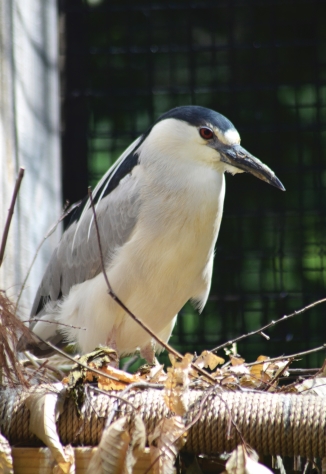White-footed Mouse
Peromyscus leucopus
| Kingdom | Animalia |
|---|---|
| Phylum | Chordata |
| Class | Mammalia |
| Order | Rodentia |
| Family | Cricetidae |
| Genus | Peromyscus |
| Species | P. leucopus |
| Lifespan | 1 year in the wild; 3 years in captivity |
| Size | 5.5 to 8 inches long from snout to tail; average tail length 2.25 to 4 inches |
| Offspring | 2-9 young |
| Status | Abundant |

About White-footed Mice
What do white-footed mice look like?
The white-footed mouse ranges in color from grayish-brown to reddish-brown on its dorsal side and face while its ventral side and legs are white. Its average mass is 0.81 oz but can range from 0.5 oz to 1 oz. Other members of the Peromyscus family all have smiliar looks or ranges but can be differentiated by either tail length or mass.
What is their habitat?
White-footed mice reside in a wide variety of areas but tend to favor warm, dry forests or brushlands at middle elevations. These mice can often be found around old stone works and fallen trees as they make good dry homes. This species of mouse is the most abundant in mixed hard woods along the eastern coast. Four to twelve individuals can be found per acre of woodland.
What are predators of the white-footed mouse?
Since the white-footed mouse is primarily nocturnal, its main predators are those that are active between dusk and dawn. Snakes, owls, bobcats, weasels, and foxes are common predators of the white-footed mouse. The primary diet of the white-footed mouse is seeds, grains, small fruits, and small insects.
What are some adaptations of the white-footed mouse?
White-footed mice area solitary and territorial through home ranges sometimes overlap. They are excellent climbers and swimmers allowing them to be found on almost any land mass. They have excellent sight, smell, and hearing.
What is the breeding season for white-footed mice?
White-footed mice are generally not social animals with the exception of the breeding season, which ranges from March to October in the north and year round in the south. Gestation period is 22 to 28 days with nursing occurring until young are weaned. The mice are born hairless and blind, eyes open around 10 days and ears open around 12 days. The mature mating age of the white-footed mouse is 44 days.
Fun Facts!
- The white-footed mouse is often misidentified as a deer mouse (Peromycsus maniculatus) as it closely resembles it in both size and coloration although deer mice tend to have a more distinctive separation of fur colors.
- White-footed mice have excellent homing instincts, and can find their way back home from over 2 miles away.
- White-footed mice are known for a unique practice of drumming on hollow reads or a dry leafe with their front paws producing a musical buzzing sound, through it is unclear why they do this.
- White-footed mice live an average of 1 year in the wild, meaning there is an almost complete turnover of wildmice every year.


























